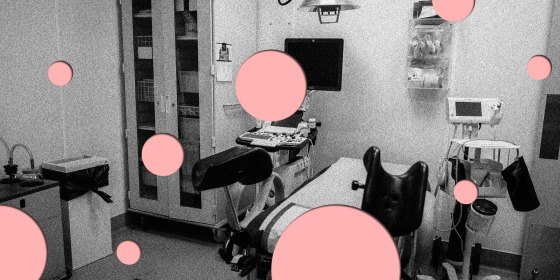Every July, thousands of newly minted doctors begin their residency training programs across the United States. This year, a time that is usually filled with excitement and anticipation — the thrill of new ID badges that say “physician” and fresh, long white coats — will now collide with an incredibly tumultuous political landscape that will impact generations of physicians. In some states, it will also affect the at least 1 in 4 women who, before Roe v. Wade was struck down by the Supreme Court, were likely to have an induced abortion during their reproductive years.
Almost half of the nation’s OG/GYN residency programs are in states that have or will ban abortions, which will create crucial gaps in medical education.
Almost half of the nation’s OB-GYN residency programs are in states that have or will ban abortions, which will create crucial gaps in medical education. This, in turn, will make access to equitable, high-quality reproductive health care impossible, or severely lacking, for patients.
Medicine is a highly regulated profession, with licensing boards, state medical boards and detailed educational standards. Within hours of the Supreme Court decision, the Accreditation Council for Graduate Medical Education, the body responsible for accrediting all residency programs in the United States, proposed modified language, stating:
“Obstetrics and gynecology residency programs may be located in jurisdictions where there are legal restrictions on induced abortions. Requirements have been added for programs in jurisdictions where there are such restrictions. These requirements preserve the goal of training competent obstetrician/gynecologists to be able to provide comprehensive reproductive health care.”
But how these requirements will be implemented remains unclear.
In Louisiana, 4 of 5 residency programs contract with one abortion clinic that now faces an uncertain future and may have to shut down, which would leave those residents without requisite education. Oklahoma’s two medical schools currently do not offer abortion training, which forces medical students and residents to find other opportunities to understand important components of clinical care. Physicians in Wisconsin overwhelmingly support abortion training but now face potential issues recruiting students and residents into obstetrics and gynecology programs due to a possible lack of clinical and teaching experience.
Abortion training is broad and includes learning how to perform dilation of the cervix and surgical evacuation of the uterus after the first trimester of pregnancy, medical abortions, and medical management of miscarriages. Research shows that abortion training improves general reproductive health skills and improves the quality of other obstetric procedures.
Along with the technical aspects of training, there is an incredible amount of education during the “in between” time — counseling a patient prior to their decision, helping them with the incredible emotions that occur throughout and humanizing the sterile environment of the clinic and procedure room. Understanding aspects of trauma-informed care enhances the compassion in medicine and underscores the “care” part of health care.
Research shows that abortion training improves general reproductive health skills and improves the quality of other obstetric procedures.
Training programs can send residents to other states, but they will then have to face simultaneous workforce shortages in their own institutions. Physicians do not train in isolation; they hold their residencies and practice all across the country, so physicians who do not receive training and therefore cannot recognize certain health conditions could easily end up in the other America, where reproductive justice has been upheld and for which they will be unequipped. Unfortunately, if the doctor who sees you has little to no experience, it is likely no better than being in a state where abortion is banned.
We have yet to hear of a solution for this imminent crisis of care. Computer simulations for teaching reproductive care can be very effective, but they don’t provide training to handle complications of home abortions, especially in the later stages of pregnancy, which have rarely been seen in emergency rooms and clinics in states where abortion is banned or restricted.
Medicine is often both art and science. Years of training and mentorship result in an ability to deal with incredibly complex and difficult clinical and social scenarios. The void of experience combined with the insertion of lawyers, courts and law enforcement into the middle of the physician-patient relationship should be considered criminal negligence.
Victims of rape or incest should never be put through the barriers to care that exist in a state such as South Carolina, where the recently enacted Fetal Heartbeat and Protection From Abortion Act requires the physician to violate patient privacy and report the case to the county sheriff. A pregnant patient diagnosed with cervical cancer should be offered the option of termination with subsequent treatment of the cancer with surgical removal, chemotherapy and/or radiation for the best chance of maternal survival. In Texas, a pregnant patient might never have that choice, and even if they did, there will now likely be no physicians who can even deliver such care.
Physicians are taught that “when you hear hoofbeats, think horses, not zebras” — meaning a physician should first think about what is more common (horses) rather than rare diagnoses (zebras). But if a physician is not familiar with horses or zebras, they will be more likely to misdiagnose, prescribe or perform inappropriate treatments and have a bad outcome for the patient in the form of additional cost, delayed care, worsening disease or death.
As advocates and communities are marching for the reinstatement of reproductive rights, a parallel battle is taking place — one that will not rise to the surface of most candidates’ stump speeches or party platforms but will have devastating effects on broad aspects of health care. Because of the interference of politics in medicine, people will die from the care they did not receive.

